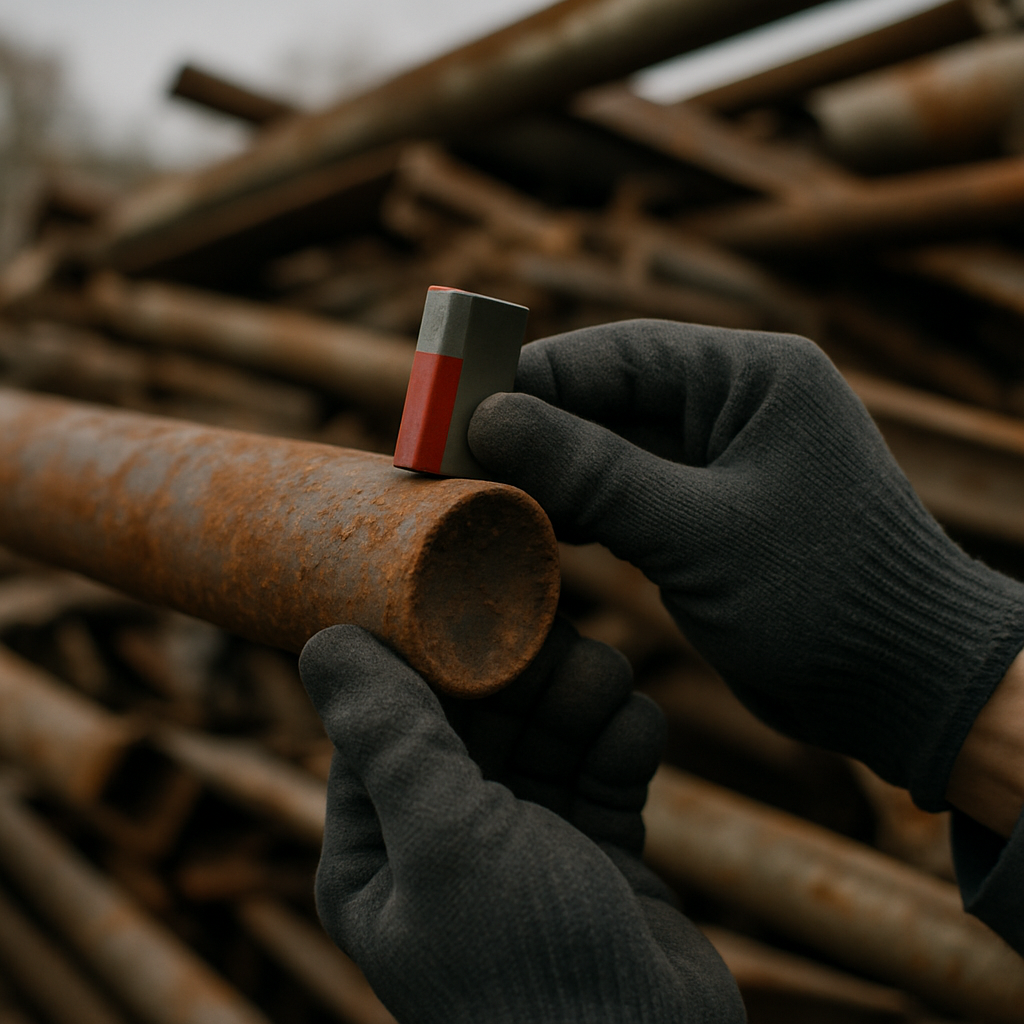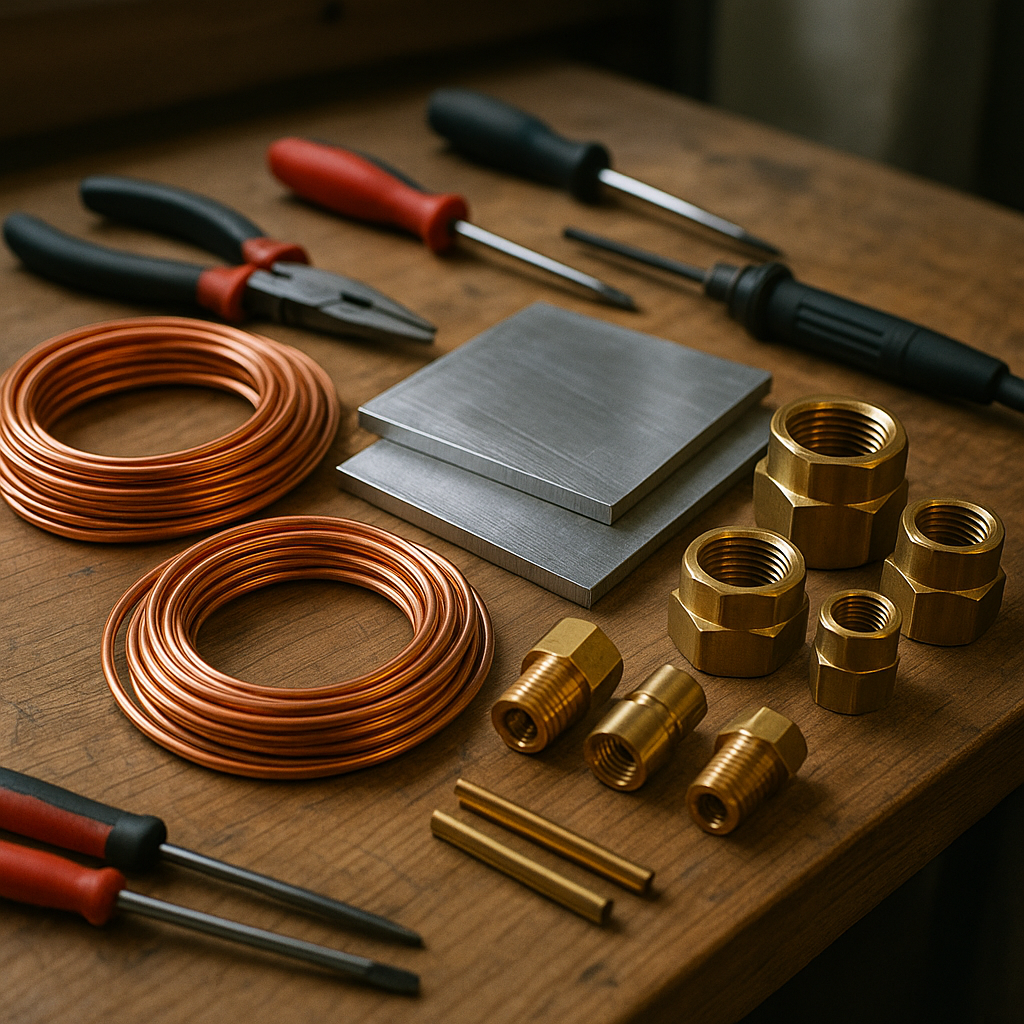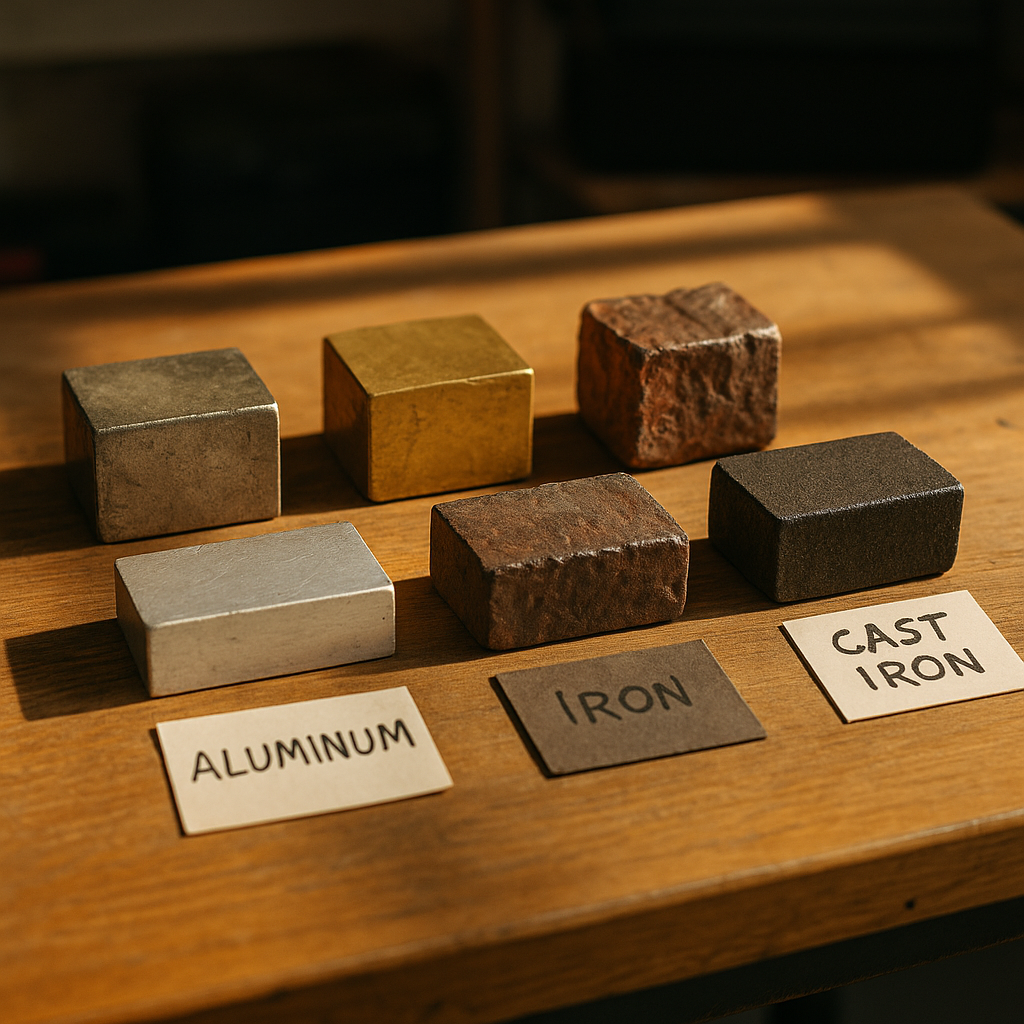5901 Botham Jean Blvd, Dallas, TX 75215
Understanding What Are the Main Categories of Scrap Metal
July 9, 2025In the recycling industry, scrap metals are categorized into two main types: ferrous and non-ferrous metals. This basic classification is crucial for effective metal recycling operations globally. The distinction between these types influences everything from sorting methods to market value.
Ferrous metals have iron as their primary component and are magnetic, making them easy to identify and separate during recycling. Common examples are steel, cast iron, and wrought iron, often used in construction materials, vehicles, and industrial equipment.
Conversely, non-ferrous metals lack iron and are non-magnetic. This group includes copper, aluminum, brass, bronze, and precious metals like gold and silver. They typically command higher market prices due to their greater malleability, resistance to corrosion, and specialized applications in industries such as electronics and aerospace.
How can you identify ferrous scrap metals?

Ferrous metals contain iron as their primary component, making them distinctly magnetic. This key property provides the most reliable method for quick identification. Steel and iron make up the majority of ferrous scrap materials found in both residential and commercial settings.
The magnetic property of ferrous metals arises from their high iron content. When you encounter metal items like steel appliances, cast iron cookware, structural beams, or automotive parts, you are likely dealing with ferrous materials. Their widespread use in construction and manufacturing makes them abundant in the waste stream.
The Magnet Test: A Simple Identification Method
The magnet test offers a straightforward way to identify ferrous metals. Simply take any magnet—even a basic refrigerator magnet—and place it against the metal surface. If the magnet sticks firmly, you are dealing with a ferrous metal.
For the most accurate results, clean any heavily corroded areas with a wire brush before testing. This removes surface contaminants that might interfere with the magnetic attraction. The attraction should be immediate and strong with ferrous metals.
When performing the test, try to pull the magnet away from the metal. If it resists and stays attached, you have confirmed the material contains significant iron content. Steel, cast iron, and other iron alloys will consistently demonstrate this magnetic attraction.
Visual Identification: Rust and Corrosion
Another telltale sign of ferrous metals is their tendency to rust. The high carbon content in these metals makes them particularly vulnerable to oxidation when exposed to moisture and air. Reddish-brown rust on metal surfaces strongly indicates ferrous content.
Common household ferrous items include steel food cans, old appliances like washers and dryers, iron railings, steel furniture frames, and automotive components such as engine blocks. In industrial settings, ferrous scrap often comes from structural steel, pipes, heavy machinery parts, and manufacturing waste.
While the magnet test is highly reliable, be aware that certain stainless steel alloys (particularly 300-series) may contain iron but show weak or no magnetic properties due to their specific crystalline structure. For these exceptions, professional recycling facilities can perform more advanced analysis.
Properly identifying ferrous metals through these simple tests ensures efficient sorting for recycling, allowing materials to be processed appropriately and returned to the manufacturing stream.
| Type | Description | Common Uses |
|---|---|---|
| Light Iron | Light gauge metal found in consumer and industrial applications | Appliances, lawn equipment |
| Heavy Iron | Divided into HMS 1 (no galvanized steel) and HMS 2 (contains galvanized steel) | Industrial pieces, auto components |
| Cast Iron | Iron poured into molds to form shapes | Auto parts, machinery |
| Busheling | Clean, new metal sheets or clippings | Primarily in auto manufacturing |
What are the characteristics of non-ferrous scrap metals?

Non-ferrous metals are known for their lack of iron content and non-magnetic properties, distinguishing them from ferrous metals. Common examples include aluminum, copper, brass, and stainless steel, each possessing unique properties that enhance their value in the recycling market.
The absence of iron provides these metals with exceptional resistance to corrosion. Unlike ferrous metals, which rust when exposed to moisture and oxygen, non-ferrous metals maintain their integrity in challenging environments. This resilience makes them ideal for outdoor applications and components that regularly encounter the elements.
Non-ferrous metals generally fetch higher prices in recycling markets due to their intrinsic value and versatility. Copper, recognizable by its reddish-brown hue, offers excellent electrical conductivity, making it essential for electrical wiring, electronics, and telecommunications. When reacting with oxygen, copper forms a green patina—the same process that gives the Statue of Liberty its iconic appearance.
Aluminum is notable for its lightweight nature and high strength-to-weight ratio, which explains its extensive use in aircraft manufacturing, automotive components, food cans, and construction materials. Although not suitable for high-temperature environments, its malleability enhances its utility in manufacturing processes.
Brass, an alloy of copper and zinc, combines strength, corrosion resistance, and aesthetic appeal. These qualities make it popular for musical instruments, decorative items, plumbing fixtures, and architectural elements where functionality and appearance are important.
The recyclability of non-ferrous metals is another significant advantage. These metals can be recycled repeatedly without degrading their properties. This supports sustainable resource management and reduces the environmental impact associated with primary metal production and mining.
Non-ferrous metals are used across numerous applications in residential, commercial, and industrial sectors. In homes, they are found in electrical wiring, plumbing systems, and kitchenware, while industries rely on them for electronics manufacturing, transportation components, and building materials. Their combination of durability, conductivity, and resistance to environmental factors makes them indispensable in modern manufacturing and construction.
| Metal | Tensile Strength | Resistance to Rust/Corrosion | Electrical and Thermal Conductivity | Boiling Point | Melting Point | Common Applications |
|---|---|---|---|---|---|---|
| Titanium | High | Excellent | Poor | 3287°C | 1668°C | Automotive, aerospace, medical |
| Nickel | High (at elevated temperature) | Excellent | Good | 2913°C | 1453 °C | Batteries, energy and power, electrical and electronics, chemicals |
| Copper | Good | Excellent | Excellent | 2595°C | 1083°C | Electronic, energy, construction, tools |
| Aluminum | Medium | Excellent | Good | 2470°C | 660°C | Aerospace, automotive, construction |
| Bronze | High | Good | Excellent | 2300°C | 950°C | Coins, instruments, statues, automobile |
| Lead | Low | Excellent | Poor | 1749 °C | 328°C | Ammunition, battery, radiation shielding |
| Brass | High | Good | Good | 1100°C | 900-940°C | Plumbing, electrical, aircraft, musical instruments |
| Zinc | Low | Good | Medium | 907 °C | 420°C | Solar panels, handrails, car bodies |
How can color and appearance help in identifying scrap metals?

Color and appearance are key visual indicators for identifying different types of scrap metals. Each metal exhibits unique visual characteristics that enable recyclers to quickly sort materials without specialized equipment.
Copper is easily recognizable by its reddish-orange hue. This vibrant color makes copper one of the most easily identifiable metals in a scrap pile. Over time, copper develops a greenish patina when exposed to the elements, which further aids identification.
Brass has a yellow-brown or golden appearance. This copper-zinc alloy is often mistaken for gold due to its similar color, but brass usually has a more uniform, less intense yellow tone than precious metals.
Aluminum has a silvery-gray color with a dull or matte finish. Its lightweight nature combined with this distinctive look makes it easy to recognize, even for beginners in metal recycling. Aluminum doesn’t rust like ferrous metals but may develop a whitish oxidation layer.
Stainless steel features a bright, silvery appearance with a reflective shine. This high-luster finish sets it apart from regular steel. The shine remains consistent over time as stainless steel resists corrosion and maintains its appearance longer than many other metals.
Paint, coatings, and corrosion can complicate metal identification by obscuring the true color of the underlying material. When faced with painted scrap, carefully scrape or file a small section to reveal the natural color beneath. This simple step can prevent costly sorting errors.
For rusted ferrous metals, look for the characteristic reddish-brown oxidation. The rust pattern and texture can provide clues about the base metal. Steel usually develops flaky, uneven rust, while iron may show more uniform corrosion.
Surface texture also provides valuable identification information. Copper and brass feel smooth and may have a slight waxy texture, while oxidized aluminum often feels somewhat chalky. Stainless steel typically has a sleek, smooth finish.
Recycling facilities rely heavily on visual sorting before using more technical methods. Training your eye to recognize these color and appearance differences can significantly improve sorting accuracy and efficiency.
Remember that environmental factors and manufacturing processes can affect a metal’s appearance. Metals exposed to high heat, chemicals, or prolonged weathering may develop unusual coloration or surface characteristics that complicate identification.
| Metal | Color | Appearance |
|---|---|---|
| Platinum | Pale grayish-white | Rarer than gold, used to represent platinum |
| Gold | Vivid yellow | Symbolic of wealth and power, first used as a color in the 1300s |
| Silver | Light-gray | Characterized by neutrality, often the base for other metallic colors |
| Bronze | Strong orange | Represents the alloy bronze, first used as a color in 1753 |
| Vegas Gold | Moderate greenish-yellow | Associated with the glamour of Las Vegas |
| Nickel | Dark greenish-gray | Represents the metal nickel, lighter shade in US coins |
| Gunmetal | Blackish-green or bluish-purple | Represents tarnished metals, used in industry |
For challenging cases where visual identification proves difficult, combine appearance assessment with other testing methods like magnetism tests or density evaluation to confirm the metal type. This multi-method approach ensures accurate sorting and maximizes the value of your recycled materials.
Conclusion: Mastering scrap metal identification

Identifying different types of scrap metal is a valuable skill that offers both environmental and financial rewards. Knowing how to distinguish between ferrous metals, which stick to magnets, and non-ferrous metals, which do not, lays the foundation for effective sorting. This straightforward but crucial knowledge turns seemingly random metal waste into organized resources ready for recycling.
Beyond responsible waste management, mastering metal identification enhances profitability. By learning to recognize copper’s distinctive reddish-brown color, aluminum’s lightweight properties, and brass’s yellowish hue, you can maximize the value of your scrap. Clean, well-sorted metals fetch higher prices at recycling centers since they require less processing. The ability to properly separate these materials directly influences your potential returns.
For all your metal recycling needs, contact Okon Recycling at 214-717-4083. Our team can help you turn your scrap metal knowledge into profitable recycling practices.
